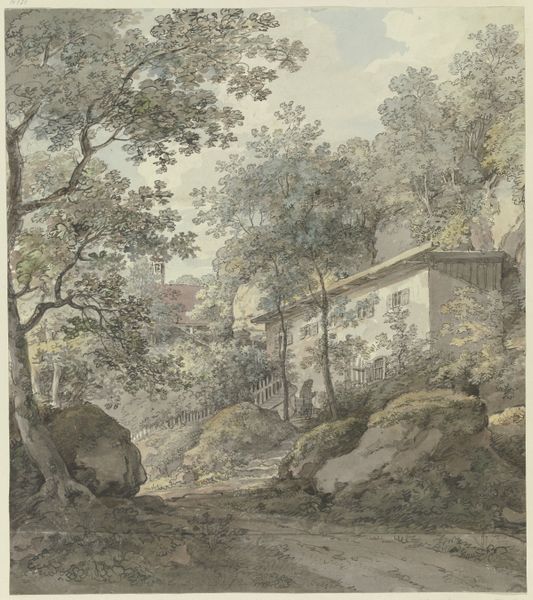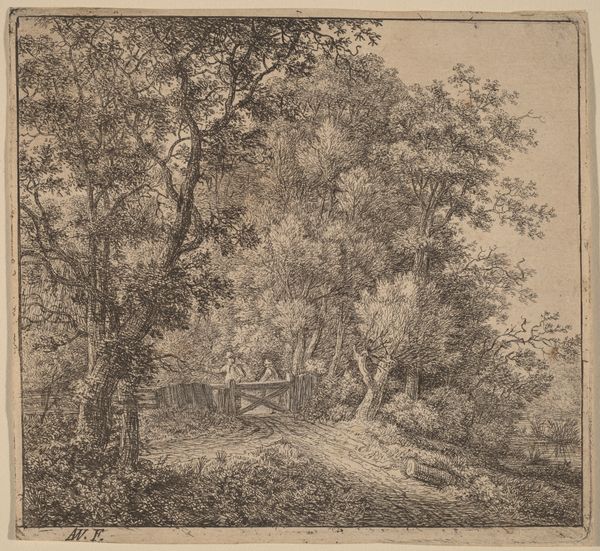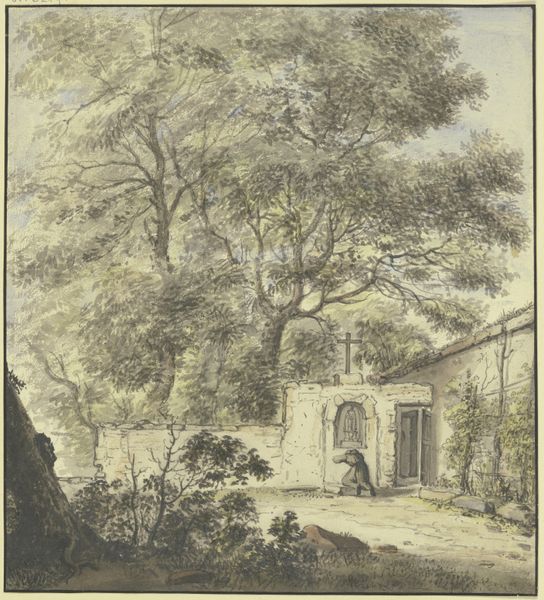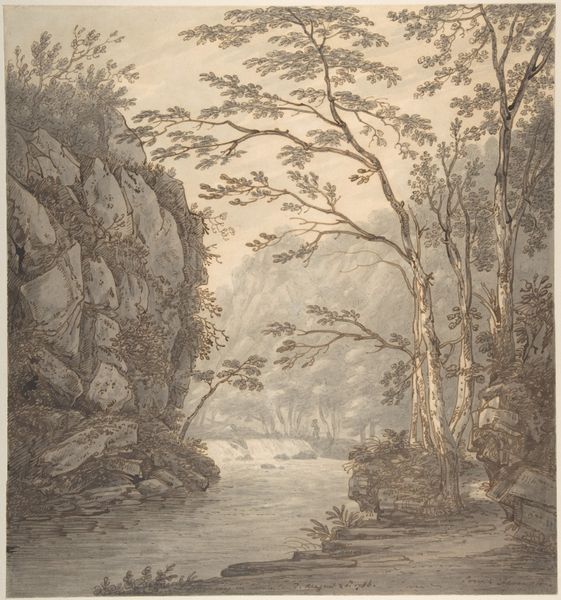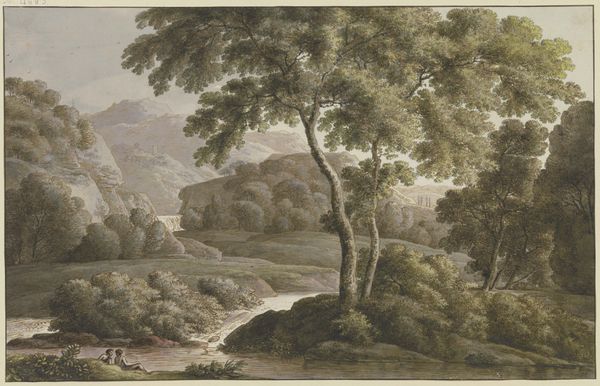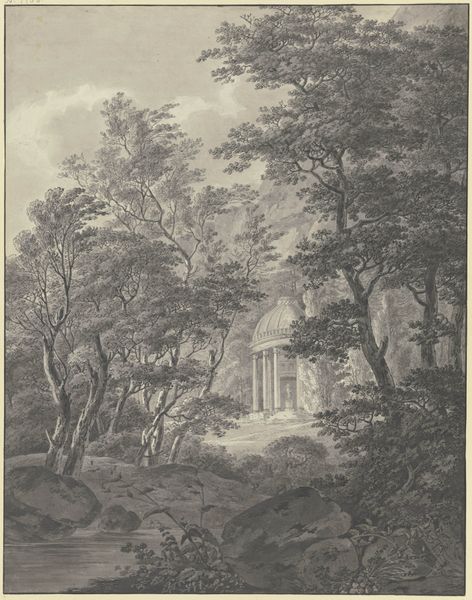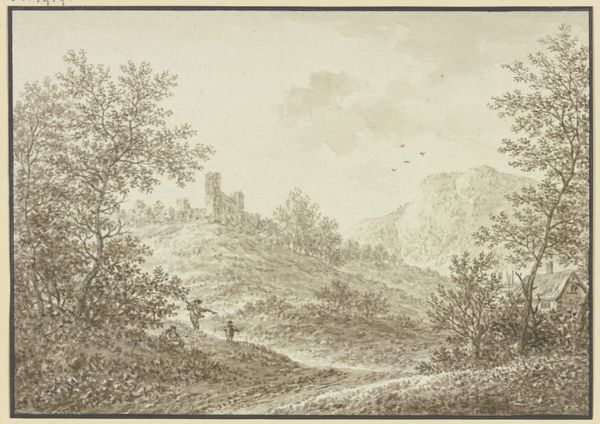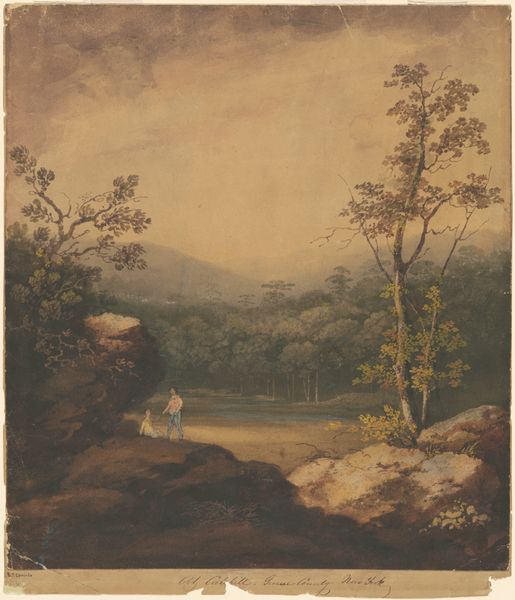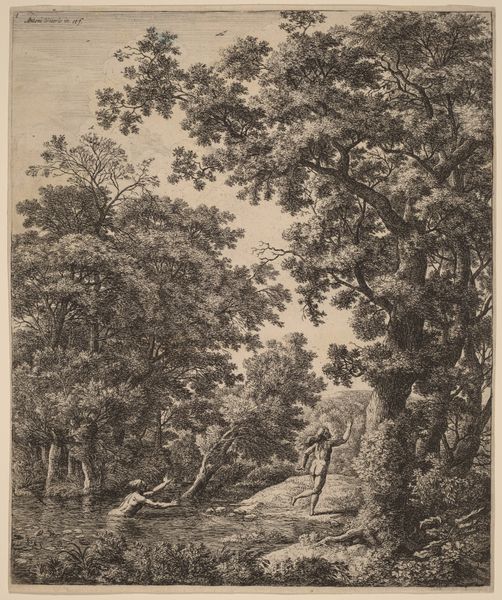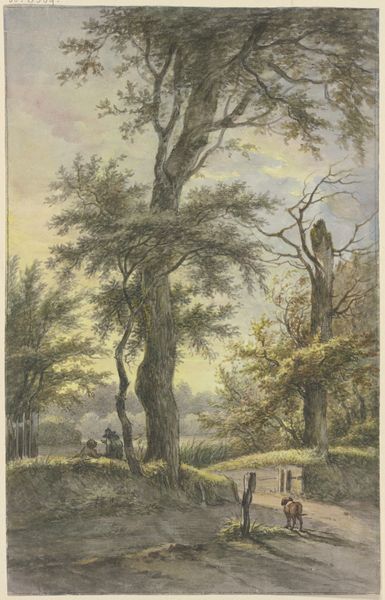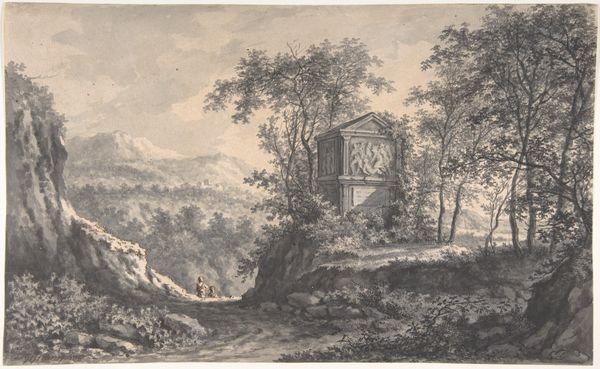
Copyright: Public Domain
Johann Georg von Dillis rendered this watercolor of a hermitage among trees, evoking a longing for pastoral simplicity. The hermitage, traditionally a place of religious retreat, suggests a turning away from the world. Note how Dillis places the building, half-hidden, nestled between boulders and foliage, with a church steeple rising distantly above the trees. This arrangement recalls the classical topos of the "locus amoenus," a pleasant, shaded place that is also an escape from the trials of life. It echoes the gardens of antiquity as settings for both pleasure and philosophical reflection. Such sanctuaries appear across time, from medieval illuminated manuscripts to Renaissance paintings, each era imbuing the "locus amoenus" with layers of cultural and emotional significance. This echoes humanity’s deep-seated desire for refuge. The way Dillis has arranged these elements reveals the psychological power of a landscape, inviting viewers into a space for introspection and a sense of the divine. Thus, this hermitage, a symbol of spiritual and personal retreat, continues its cyclical journey through art.
Comments
No comments
Be the first to comment and join the conversation on the ultimate creative platform.
